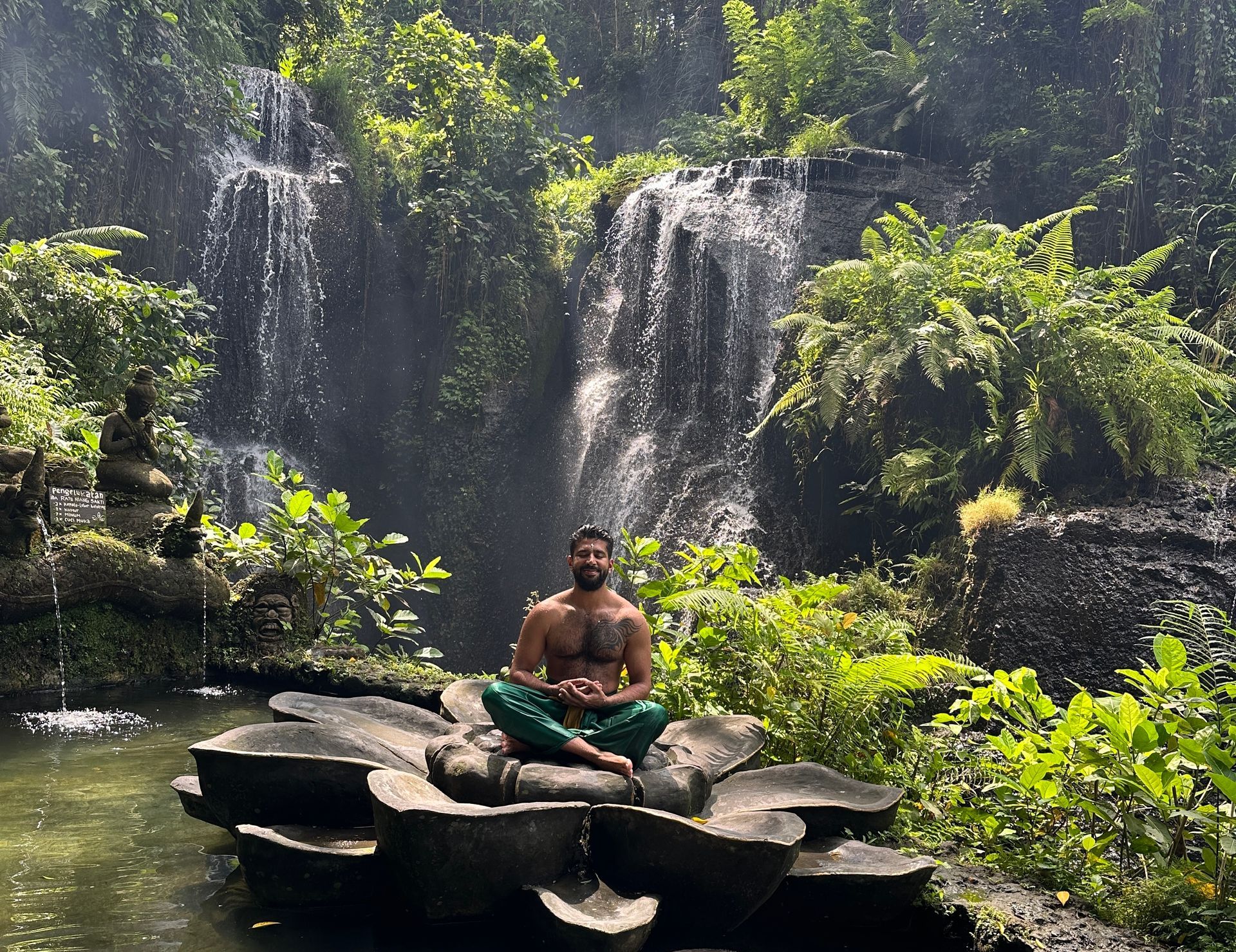Misconceptions about Meditation
Introduction
Meditation, often surrounded by misconceptions, is much more than just a way to relax or a mystical practice reserved for monks. While it can certainly help reduce stress, its true value lies in fostering greater awareness and cognitive clarity. Scientific research shows that meditation can retrain the brain by promoting neuroplasticity—enhancing focus, emotional regulation, and overall mental well-being. Rather than an escape from reality, it’s a tool for deeper engagement with life and transformation of daily experiences.
Let’s break down the common myths and explore the real details behind meditation.

Meditation Is Not Just a Relaxation Technique
Distinction Between Relaxation and Insight
It’s a common belief that meditation is purely about relaxation. While relaxation is certainly a byproduct, the broader goal of meditation is to cultivate awareness and insight. Studies show that meditation can improve neuroplasticity, helping the brain adapt and evolve. Rather than just calming the mind, it sharpens focus and enhances understanding, allowing for personal growth and transformation.
Relaxation is the gateway, but insight is the real destination.
The Goal of Awareness in Meditation
The goal of meditation, is not solely to reach relaxation but to develop a sustained state of awareness. The awareness cultivated through meditation is not merely being conscious of one's surroundings but involves a deeper insight into one's thoughts, emotions, and actions. This heightened awareness enables individuals to experience life more fully and respond to situations with greater clarity and composure.
By focusing on awareness, practitioners can learn to observe their thoughts and emotions objectively, leading to increased self-understanding and eventual transformation. As awareness deepens, so does the opportunity for profound personal insight and change, rather than simply repeating a state of relaxation.
Meditation Is Not Going Into a Trance
Deep Concentration vs. Hypnosis
Another common misconception is that meditation involves entering a trance-like state. This misconception possibly arises from the seemingly passive appearance of a meditator.
However, in practices like insight meditation, the opposite is true. The state achieved in meditation is not akin to hypnosis, where one might be susceptible to external influences. Rather, meditation involves deep concentration, where the meditator remains fully in control of their mental faculties.
This deep concentration is a deliberate and active process that enhances self-awareness rather than diminishes it. While some states experienced during meditation may appear trance-like to an outside observer, the practitioner is very much conscious and aware, utilizing concentration as a mindfulness tool, not as an escape from reality.
The Role of Mindfulness
Mindfulness is a cornerstone of meditation and plays a crucial role in debunking the myth that meditation is about entering a trance. Mindfulness is about staying present and fully experiencing each moment as it happens, with a conscious and open mind. In meditation, mindfulness promotes full engagement with one’s internal and external experiences, fostering a state of active awareness rather than passive trance.
It is about developing a sustained state of awareness. This awareness involves a deep understanding of one’s thoughts, emotions, and reactions, enabling individuals to approach life with greater clarity and balance. Research shows that this heightened state of awareness can rewire neural pathways, improving emotional regulation and cognitive function.
This focus on mindfulness helps practitioners become acutely aware of their thoughts, emotions, and surroundings. It involves a dynamic process of paying attention purposefully and without judgment, ultimately guiding individuals to live more fully in the present moment. Engaging in mindfulness during meditation helps sharpen awareness and provides a clearer perspective on life, rather than leading to a trance where perceptions are dulled or obscured.
Meditation is far more intricate and profound than the simplistic notions of relaxation and trance. It is a journey towards heightened awareness and self-knowledge, fostering personal growth and deeper insights into the very fabric of everyday life. By dispelling these misconceptions, individuals can approach meditation with a clearer understanding of its true benefits and transformative potential.
Meditation Is Not Mysterious or Inaccessible
Understanding Meditation Through Practice
A common misconception about meditation is that it is a mysterious practice that is inaccessible to ordinary individuals.
This misunderstanding stems from the fact that meditation delves into levels of consciousness that are often beyond the grasp of words alone. However, this does not mean that meditation is incomprehensible.
Much like learning to walk, meditation is better understood through practice rather than theoretical discussions. Just as one cannot eloquently describe the precise mechanics of walking but can perform it effortlessly, meditation is a practice that requires direct experience.
It is an investigative journey, with each session offering new insights and experiences. The key is not to seek predictability, but to embrace each moment with a sense of freshness and openness.
The Importance of Experience Over Words
Meditation's true value lies in its experiential nature. It is not a formulaic process yielding predictable results.
Each meditation session is unique, providing an opportunity for self-discovery and heightened awareness. Trying to quantify meditation’s benefits through words alone leads to limited understanding.
Instead, meditative experiences can deepen our connection to life when approached as an adventure. This is emphasized in practices, where predictability signals a departure from the path and a need to recalibrate focus.
Therefore, meditation should be approached as an experiential quest, fostering an understanding that goes beyond written or spoken explanation.
Emphasis on Awareness and Liberation
The primary purpose of meditation is to cultivate awareness and achieve liberation from mental constraints. Meditation encourages practitioners to develop mindfulness, become attuned to their emotions, and gain clarity in understanding themselves and the world around them. The journey of meditation aims towards the purification and transformation of everyday life, promoting a conscious and deliberate engagement with reality.
Liberation, in this sense, refers not to gaining supernatural powers but to freeing oneself from the chains of ignorance and emotional instability. Awareness acts as a safeguard, providing clarity and perspective that help navigate life with a balanced and liberated mindset. Thus, the true goal of meditation remains rooted deeply in awareness and liberation rather than the pursuit of psychic abilities.
Meditation Is Not Dangerous
Meditation is often misunderstood as a potentially hazardous activity, but this perception is largely unfounded. While it's true that meditation may bring up unsettling thoughts or past memories, these are not inherently dangerous; rather, they are opportunities for personal growth and healing.
Managing the Risks of Meditation
Practicing meditation involves becoming more aware of hidden thoughts and emotions that may have been suppressed over time. This naturally involves a certain degree of discomfort as these deeper issues come to the surface. However, this process can be highly beneficial as it allows individuals to confront and process their past traumas or fears safely.
Developing a higher awareness through meditation acts as a safeguard, equipping individuals with the emotional tools necessary to deal with life's challenges more effectively. By increasing one's mindfulness and awareness, meditation assists in reducing the perceived risks associated with facing these inner truths.
The Benefits of Increased Awareness
One of the notable outcomes of meditation is the development of increased awareness and mindfulness, which are instrumental in navigating the complexities of daily life. This heightened awareness improves one's ability to respond to stress and adversity adaptively, rather than reactively.
It fosters resilience by teaching individuals how to pause and reflect before acting, leading to more thoughtful and deliberate decision-making. Moreover, increased awareness strengthens self-control and emotional intelligence, which are crucial for maintaining healthy relationships and achieving personal goals.
Meditation Is Not Only for Saints and Sadhus
A widespread misconception is that meditation is an exclusive practice reserved for saints, monks, or religious figures. In truth, meditation is accessible to all, and its benefits can be experienced by anyone, regardless of religious or spiritual background.
Relationship Between Morality and Meditation
Meditation promotes moral development, but not because practitioners must be inherently moral to start meditating. Instead, meditation is a means by which morality, concentration, and wisdom grow together.
As one's meditation practice deepens, self-restraint and conscious behavior naturally align with moral precepts without forceful adherence to stringent codes.
This integrated growth reflects a shift towards behaving with compassion and understanding, automatically resulting in moral conduct. Thus, meditation nurtures attributes that facilitate a moral lifestyle by fostering inner harmony and peace.
Meditation Is Not Escaping Reality
Meditation is often misunderstood as a means to disconnect from reality. However, the practice is, in fact, a tool for engaging more deeply with life's truths and embracing the present moment with clarity and understanding.
Facing Reality Through Meditation
Meditation is not about running away or hiding from the challenges and complexities of life. Instead, it equips individuals to face reality head-on. Through meditation, practitioners learn to observe their thoughts and emotions without judgment, increasing self-awareness.
This heightened awareness allows individuals to confront painful memories or emotions that they may have previously avoided. Meditation provides the clarity needed to deal with these realities rather than escaping them, fostering personal growth and mental resilience.
Overcoming Suffering by Engaging Deeply
One of the most profound misconceptions is that meditation is a form of escapism. On the contrary, meditation encourages practitioners to delve deeply into their experiences. By doing so, people can pierce through the layers of pain and discomfort to reach a state of peace and acceptance.
This process doesn't eliminate suffering but transforms the relationship with it, allowing individuals to overcome distress through engagement, rather than through avoidance. Meditation becomes a practice of embracing the full spectrum of human experience.
Meditation Is Not About Getting High
Many people come to meditation with the expectation of achieving a perpetual state of bliss or euphoria. While meditation can lead to experiences of deep tranquility and happiness, these are not the primary objectives of the practice.
Blissful Feelings as Byproducts
While meditation often results in feelings of relaxation and contentment, these are merely byproducts rather than the goal. When meditation is approached with the aim of chasing blissful states, the inherent tension in such striving can actually hinder the process. Bliss arises naturally when the mind relaxes and lets go of attachments, but it should never be the focus of meditation. These transient states are enriching but not the destination of the meditative journey.
The True Purpose of Increased Awareness
The true aim of meditation is the cultivation of awareness and insight. By focusing the mind and turning inward, meditation practitioners deepen their understanding of themselves and their surroundings.
This increased awareness helps to dismantle mental and emotional clutter, leading to greater clarity and wisdom. Thus, the purpose of meditation extends beyond the fleeting sensations of bliss to encompass a broader vision of personal and spiritual growth. This focus provides a sustainable path to transformation, not just temporary feelings of happiness.
In summary, meditation is an active process of engaging with reality and increasing awareness. It is often misunderstood as an escape or a means to chase after temporary bliss. True meditation, however, opens the door to profound insights about oneself and the universe, providing tools to live a deeper, more meaningful life.
Meditation Is Not Selfish
A common misconception is that meditation is a selfish activity, focusing solely on the individual's inner world while neglecting outward responsibilities. This perception stems from an image of the meditator sitting idly on a cushion, apparently disengaged from societal activity. However, this perspective overlooks the deeper purpose of meditation, which is to purify one’s mind from negativity and emotional distress.
The act of meditation serves to remove anger, prejudice, and ill will from one’s heart, replacing them with compassion and understanding. In doing so, meditation cultivates a mindset that is more empathetic and altruistic. This may ultimately enhance the meditator's ability to engage with and contribute positively to society.
Meditation is not about withdrawing from the world, but rather understanding oneself in a way that fosters genuine compassion for others. An individual who has meditated extensively is better equipped to handle interpersonal conflicts and contribute to solutions that benefit the larger community.
Meditation Is Not About Thinking Lofty Thoughts
Contrary to what some may believe, meditation is not a practice of generating profound or lofty thoughts. While insightful thoughts can certainly arise during meditation, they are not the aim of the practice. Often, lofty thoughts are seen as pleasurable byproducts rather than objectives.
The primary focus of certain meditation techniques, is not on dwelling in a realm of elevated concepts but on cultivating awareness and mindfulness. Meditation involves experiencing life events directly, without attaching prejudices or mental images to them. This means confronting reality as it is, moment to moment, without editing it through personal biases.
Experiencing Life Without Bias
Getting in flow emphasizes the importance of experiencing life without the interference of personal biases. This involves observing physical sensations and mental events with detachment, letting them arise and pass naturally, much like observing clouds drifting across the sky. This state of mind encourages the practitioner to remain present and fully aware in the current moment, understanding their experiences as they genuinely are.
In practicing this nonjudgmental awareness, one can gain insight into their habitual thought patterns and emotional responses, enabling a transformation in how they perceive and react to the world around them. This heightened state of awareness is not about immediately solving life’s problems, but rather about understanding them deeply over time.
By transcending personal biases and cultivating mindfulness, practitioners can achieve a heightened state of clarity and peace. This practice empowers them to lead lives that are calm yet engaged, informed yet unburdened by the clutter of undue mental preoccupations. In essence, Vipassana meditation is a profound journey of self-discovery and holistic well-being, offering the practitioner tools for sustainable personal growth and societal contribution.
Meditation Is Not a Quick Fix
The Importance of Patience in Practice
Meditation, much like any worthwhile endeavor, demands patience and persistence. It is not an overnight solution to life's complexities or challenges. Beginners often enter with the misconception that meditation will quickly resolve their issues or serve as an immediate balm for their stress and anxieties. However, meditation is more of a gradual journey rather than a sprint toward instant results.
The initial practice of meditation may, in fact, unearth suppressed emotions or discomfort, which can be challenging for newcomers. This stage is not to be feared but embraced, as it signifies the beginning of a transformative inner journey. Practitioners need to remain patient as these emotions are resolved over time, leading to increased clarity and emotional resilience.
Moreover, meditation teaches the critical lesson of patience itself. As you commit to the practice, you learn to be more present and less reactive, which are skills that require time and consistent effort to cultivate.
Long-term Benefits and Subtle Changes
While the profound benefits of meditation may not be apparent immediately, they are substantial and far-reaching over time. The subtle shifts in perspective, emotional regulation, and mindfulness often go unnoticed in the early stages but become significant with continued practice.
Meditation contributes to long-term changes in the mind and body, including reduced stress, improved focus, and enhanced emotional health. These benefits often manifest as increased self-awareness and a deeper understanding of oneself, fostering a sense of peace and contentment in one's life.
Practitioners may find that these gradual shifts lead to an overall transformation in how they approach life’s challenges. Meditation assists in developing a balanced mind that responds rather than reacts to day-to-day stressors and difficulties, thereby enhancing overall quality of life.
Thus, while meditation requires dedication, the resulting subtle, long-term changes reframe not only how individuals perceive meditation but also how they navigate the unfolding journey of life.
Genius is within simplicity.
Meditation, often surrounded by misconceptions and myths, is a simple and profound practice aiming at self-awareness and personal growth. While relaxation and states of bliss might be side benefits, the true objective lies in cultivating a deeper awareness that enriches one's experience of reality.
Misunderstandings arise when meditation is compared to trance states or quick-fix solutions. In practice, meditation is an ongoing journey, embracing patience and continuous self-improvement. By dispelling these myths, individuals can approach meditation with a clearer perspective, ultimately unlocking its potential to transform daily life.





